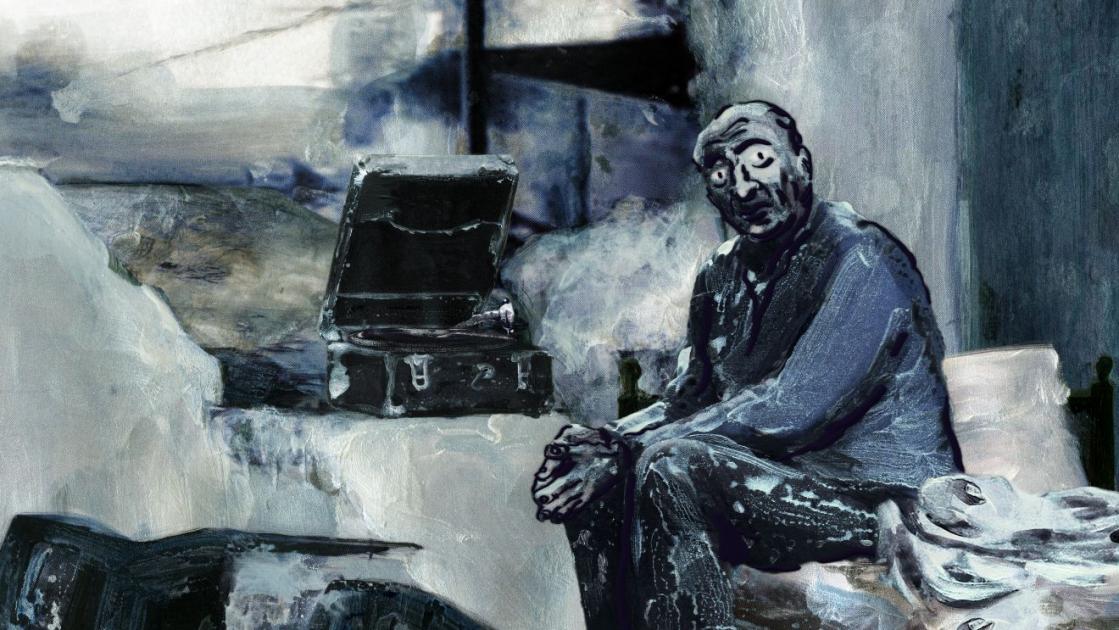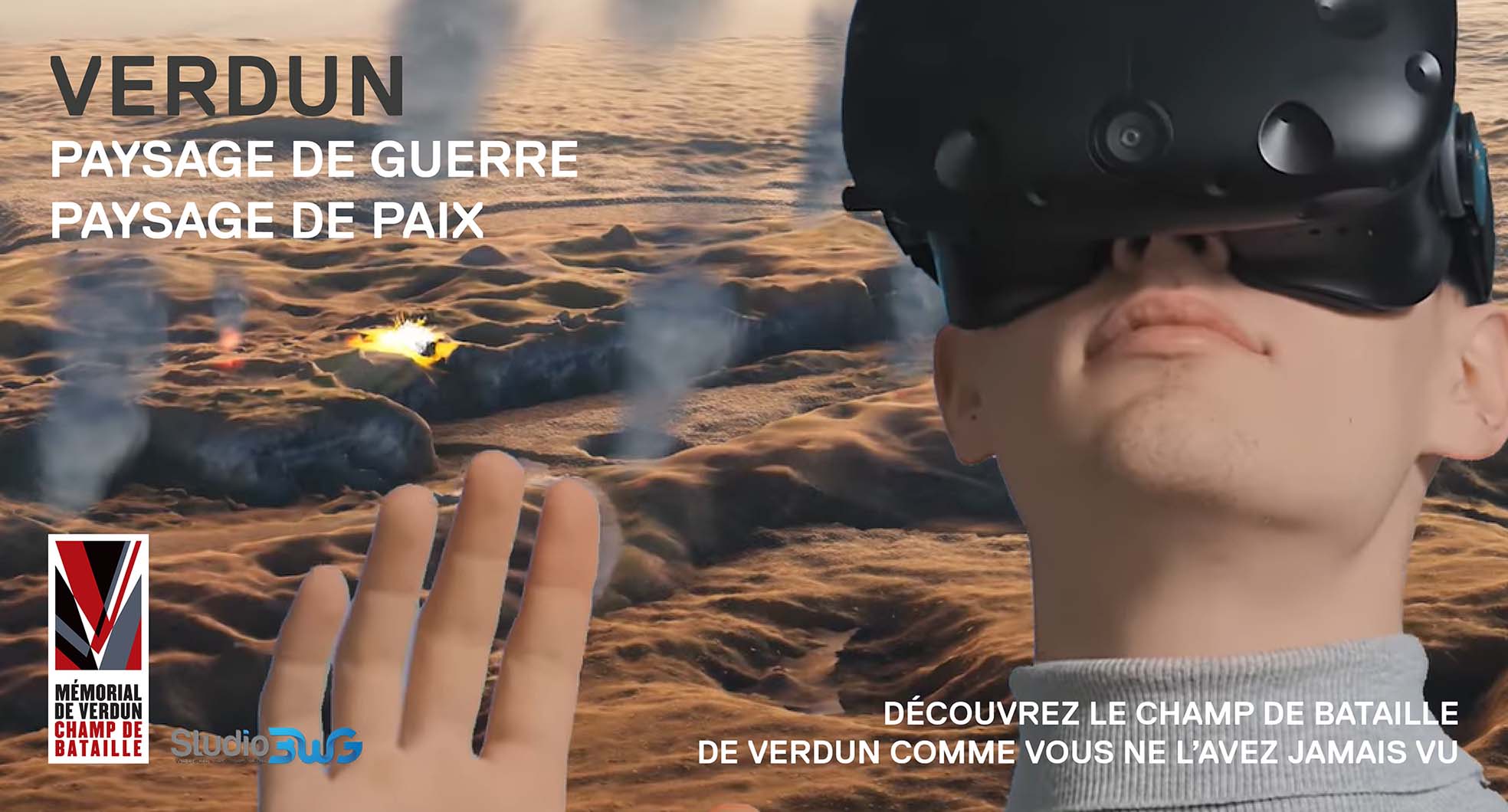According to a study by the Centre national du cinéma et de l’image animée (National Centre for Cinema and the Moving Image) (CNC, 2019), 41 % of French people have already tried out virtual reality. For the vast majority, this experimentation was carried out collectively in a public place (67 %). In 39 % of cases, this public place was a cultural or leisure venue. The expansion of these practices in multimedia libraries, museums and science museums opens up new possibilities in terms of sensory and emotional experiences.
1. Immersion to feel and be moved.

A fortiori, a virtual experience mobilises the senses of the person who experiences it (at the very least, sight or hearing). It also mobilises their capacity to perceive and feel.

In that respect, an immersive work makes it possible to “directly connect the spectator to the artistic work in front of them”. It is with these words that Avi Amar (Floréal Films) talks about The Hangman at Home VR, the experience he co-produced. Inspired by the poem of the same name by Carl Sandburg (1878-1967), this animated work offers spectators, through the immediate emotional interaction produced by virtual reality, to explore the themes of participation and awareness of self and of others with the help of a gripping narrative: what does the hangman think about when he gets home after a hard day’s work? Via 5 stories, the spectators are thus invited to share the private world of a hangman, his doubts and his humanity. The immersion and the implication of the spectator involve them in the tale more deeply than could be achieved by a more conventional narrative.

It is along the same lines that director Sam Wolson has created: Reeducated, an animated virtual reality report. The participants find themselves in one of the prisons of the Xinjiang region, to personally experience the detention situation of the Uighurs. Sam Wolson champions this empathetic approach: he doesn’t want “people to have an exhaustive understanding of the subject, but rather that they develop an emotional connection to the story”. The immersion into the reality of another person’s life can go right to the boundaries of their private world, for example, by putting themselves in the shoes of someone who loses their sight in Notes on Blindness, or of a migrant with Meet Mortaza.

Empathy and sympathy for others can also powerfully invoke the affect and emotivity of the person who experiences a virtual reality experience. In 2021 and 2022, after passing through the Saatchi Gallery in London, the VR experience We Live in an Ocean of Air (Marshmallow Laser Feast) was installed at the PHI Centre. Standing at the intersection between art, science and technology, this multi-sensory immersive installation takes place in the heart of the Sequoia National Park. Myriam Achard, Head of New Media Partnerships and Public Relations at the PHI Centre, reveals her first impressions when she saw the exhibition in London a few years ago: “I became very emotional. Seeing my own breath materialise in virtual reality, it’s powerful. To breathe with the trees, to see just how fragile our world is and to really become aware of that, I was very moved”. In terms of impact, beyond addressing environmental issues, other more societal subjects can be looked at with fresh editorial angles.

In the sphere of empathy and emotion, another impactful production deserves a mention: The Enemy. Produced by Camera lucida, this virtual reality experience was showcased in 2017-2018 to audiences of the Arab World Institute, the Tel Aviv International Film Festival, the MIT Museum in Boston, the PHI Centre in Montreal and the Geneva International Film Festival. Equipped with a virtual reality headset, each spectator is led on a 50-minute journey during which they find themselves coming face to face with combatants engaged in the same conflict, but on opposing sides. According to Karim Ben Khelifa, the director-photographer of The Enemy, “Audiences who come out of The Enemy don’t feel like they’ve watched a film. They really feel like they’ve met these people”. To create this sensation of an encounter, every movement of the visitor is detected by the device, thus giving the impression that the combatants they meet can see them, perceive them and communicate with them. When interviewed by Télérama upon exiting the experience, a college student reported that she had the impression that she had “actually talked to the person” (link to the article). A great many other visitors reference the “disturbing”, “powerful” or “deeply moving” aspect of such an encounter.
The reconstruction of a physical space and the sensation of interaction both produce feelings and emotions that complement those already experienced physically by a visitor to a cultural site. These feelings can thereby contribute to better internalising the experience that is transmitted.
2. Immersion as a means of communication.

The simulation along with the feelings stirred up by the physical experience can help to communicate a commemorative message (that is sometimes complex to convey) in a more relevant and realistic way.

It is with this same ambition that in 2018 the Anne Frank House decided to set up a virtual reality tour of the secret annex in which Anne Frank hid along with 8 other people: Anne Frank House VR. The house is thus brought back to life, and its visit provides the opportunity to (re)discover the thoughts of this thirteen-year-old adolescent that her famous diary conveys so well. Due to its evocative power, virtual reality is attracting a great deal of interest from many memorial sites, as well as history and heritage museums.

Such a medium is therefore capable of retranscribing the setting of a period in time to reconstruct places as well as atmospheres. The Mémorial de Verdun (Verdun Memorial) has used this opportunity to de reconstruct the battlefields before, during and after the war: Verdun – paysage de Guerre – paysage de Paix. Located on the first floor of the Memorial, with a view out onto the former battlefield (now a forest), the installation makes it possible to apprehend the transformations of the landscape and arouses emotion in the face of the devastating impact of the second deadliest battle of the Great War.

An opportunity that has also been taken up by multimedia and traditional libraries, and other sites of archives looking to grow their visitor numbers and renew their cultural offerings. In 2022, 15 libraries across Great Britain, in collaboration with the organisation that promotes reading among the British public, The Reading Agency, unveiled a new project: StoryTrails. A storytelling experience has been made available in which “library users, visitors and passers-by will be able to use state-of-the art equipment to explore unheard community stories in innovative ways.” (Sue Williamson, Director, Libraries, Arts Council England).
3. Immersion to share a collective experience.
Rather than a piece of equipment that appears to isolate the user (due to the use of a headset), virtual reality is becoming increasingly social.

Various free roaming experiences have been offered these past years to visitors of cultural venues such as The Horizon of Khufu at the Arab World Institute or The Enemy. Éternelle Notre-Dame (Eternal Notre-Dame) is also one of these emblematic experiences. This virtual reality experience was showcased in a 500m2 space under the Arche de la Défense at the start of 2022, and can now be accessed under the Notre-Dame forecourt. At La Défense, 50 people could simultaneously take part in the experience (150,000 visitors are expected to have attended up until the end of 2022). In terms of preparation, the visitors are welcomed, then put into groups of 6 people to be equipped (headset + backpack). They then follow a virtual guide (one of the builders of the cathedral) as they stroll around on a journey of discovery of Notre-Dame’s entire history. Each member of the group is represented by a virtual avatar, which means they can recognise themselves in the space, share a pleasant experience with the other members of the group, or talk to their friends and family.
These free-roaming group tours mean that visitors can be taken on walks through multiple environments: in the Sequoia National Park for We Live in an Ocean of Air (already mentioned above), into space for the immersive VR exhibition The Infinite or in the Arctic for – 22,7°. Different journeys that are fully experienced by groups of visitors.

Another process can contribute to heighten the sense of immersion: the individual personalisation of a nevertheless collective experience. That is the ambition of Mechanical Souls: to create a collective experience whilst also encouraging a personalised experience of the live experience that is taking place. This 40-minute-long immersive experience is both collective (a maximum of 20 visitors per session, the presence of 2 actors specialised in improvisation and 1 technician) and individual (film editing in real time via an artificial intelligence based on the reactions of the headset wearer). To achieve this narrative and technical feat that requires a space between 14m2 and 50m2, the director has designed, in collaboration with a virtual reality studio, “a system that analyses each person’s gaze and head movements to see which character they are most interested in: they will then follow that character. Each user will see different scenes and subsequently, will have a different understanding of the ending. Some will follow the same character throughout the whole experience, whilst others will change their focus of interest in each scene”. In this way, each spectator sees the same scenes at the start and the end, but, due to the unconscious choices made via the AI, they will have a unique 40-minute-long experience between the two scenes. An experience which echoes other virtual creations, like Le Bal de Paris (The Paris Ball), a stage show that offers VR choreography based on the performance of dancers there in situ. This is also the case for the Fugue VR experience, designed for 10 spectators who are accompanied by 2 dancer-guides in a gripping virtual reality show.
As a complement to a range of other communication methods, immersive digital experiences can make a fundamental contribution to enriching a venue’s cultural offering. As a support for powerful narrative themes, these experiences are sources of emotions, sensations, feelings and sharing. A whole host of exciting developments are on the horizon to enhance the value of an incredibly varied cultural sphere.
Antoine ROLAND and Baudouin DUCHANGE


